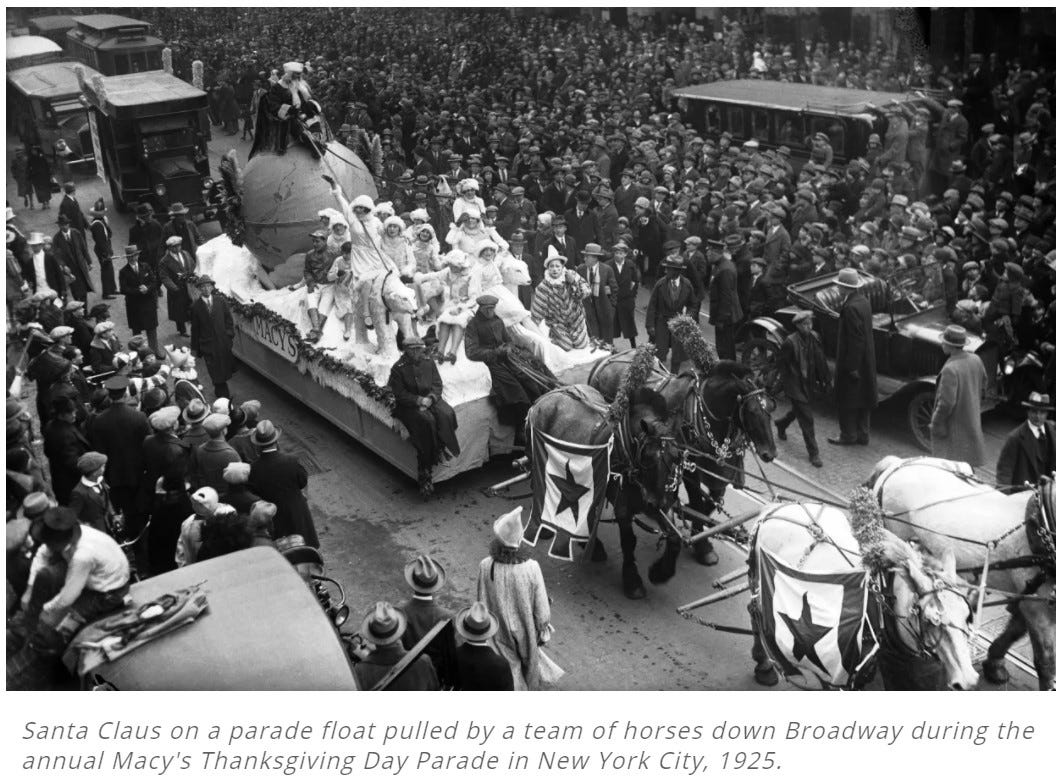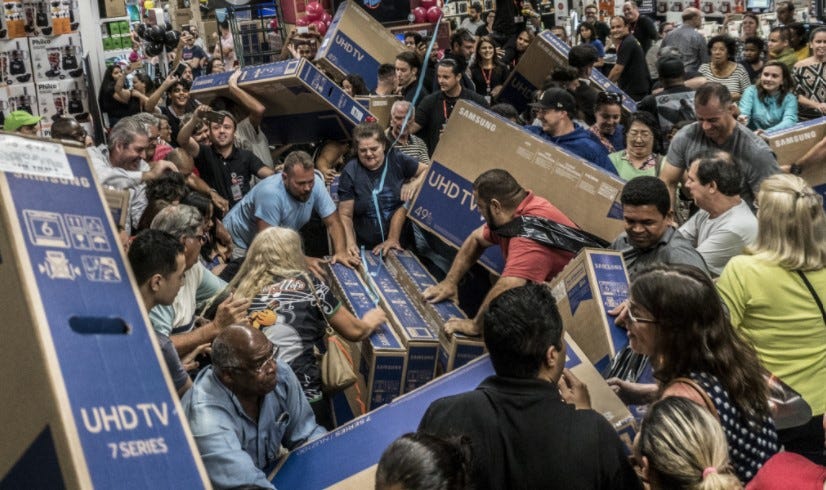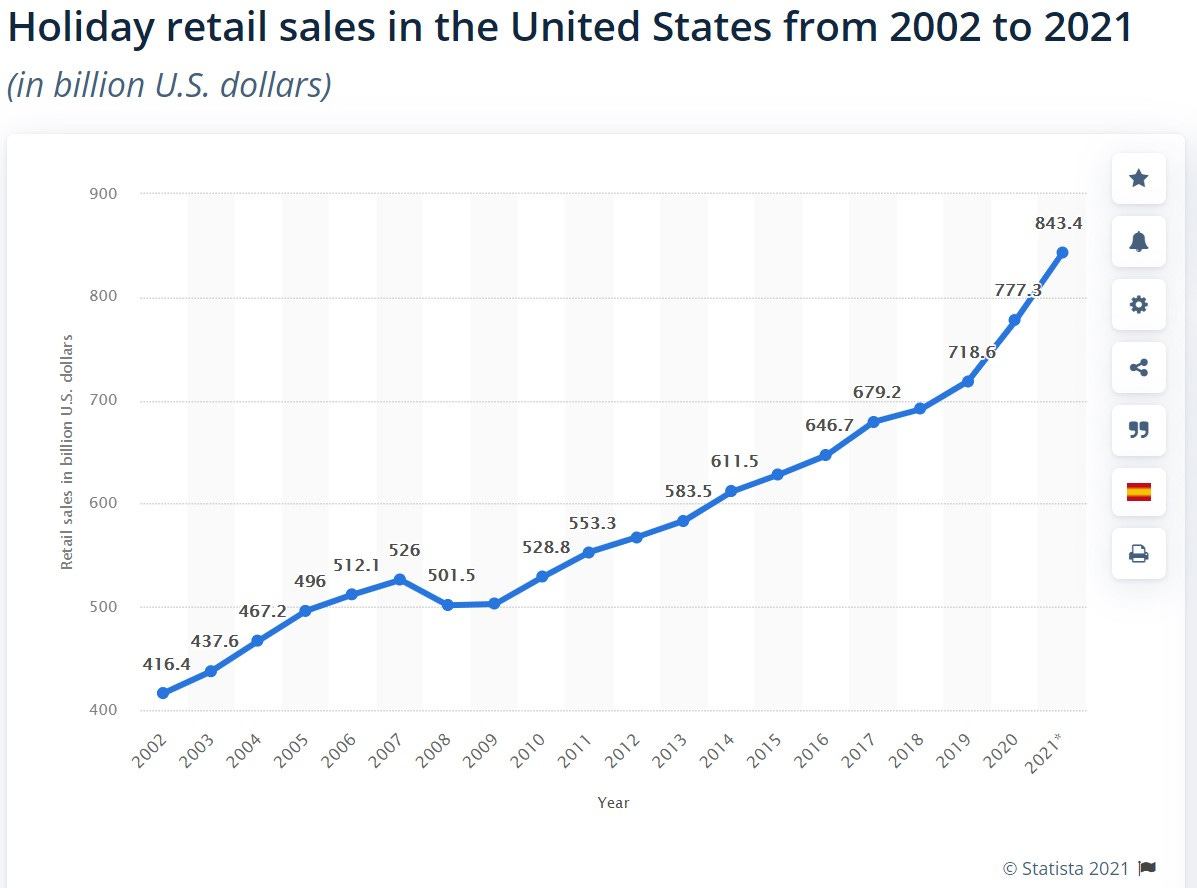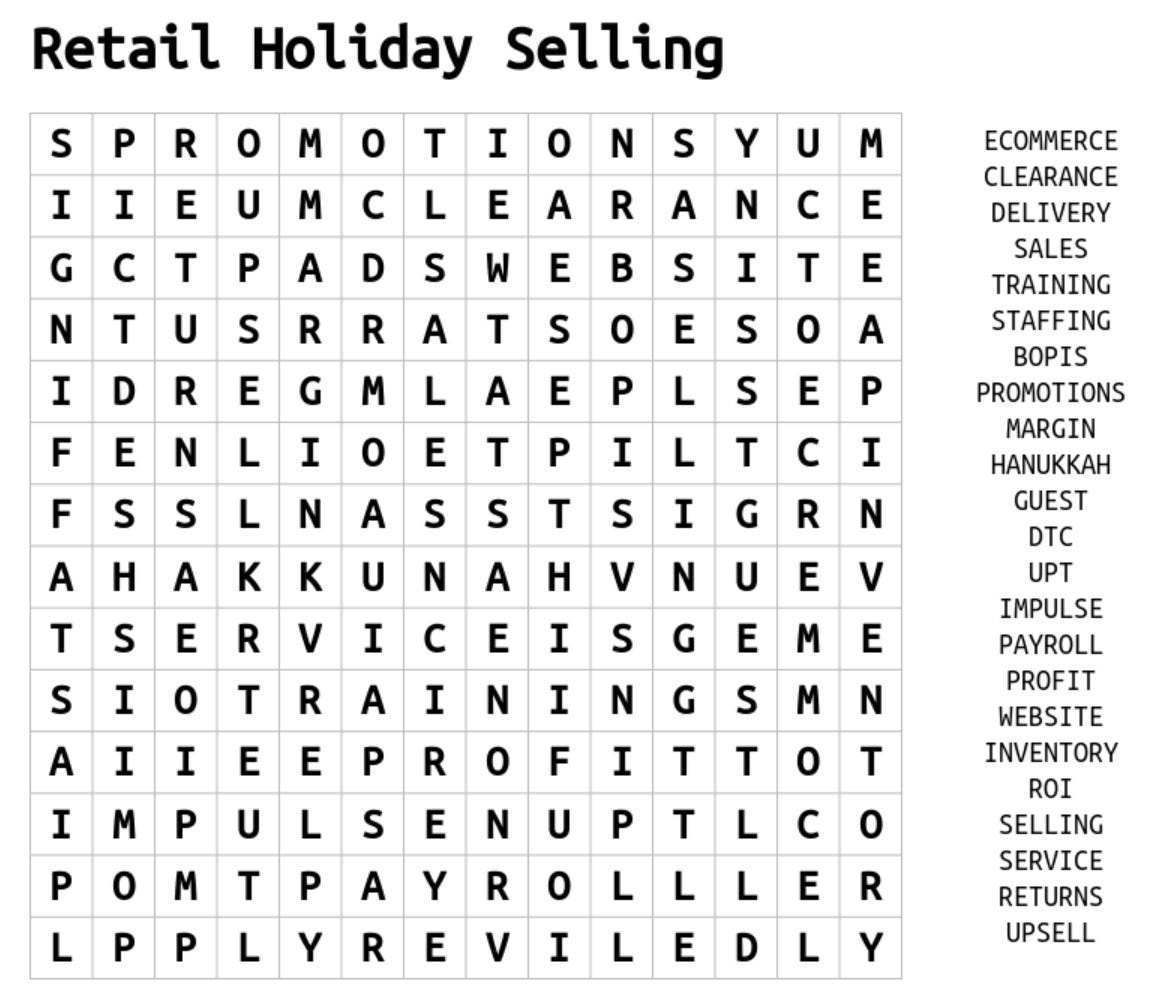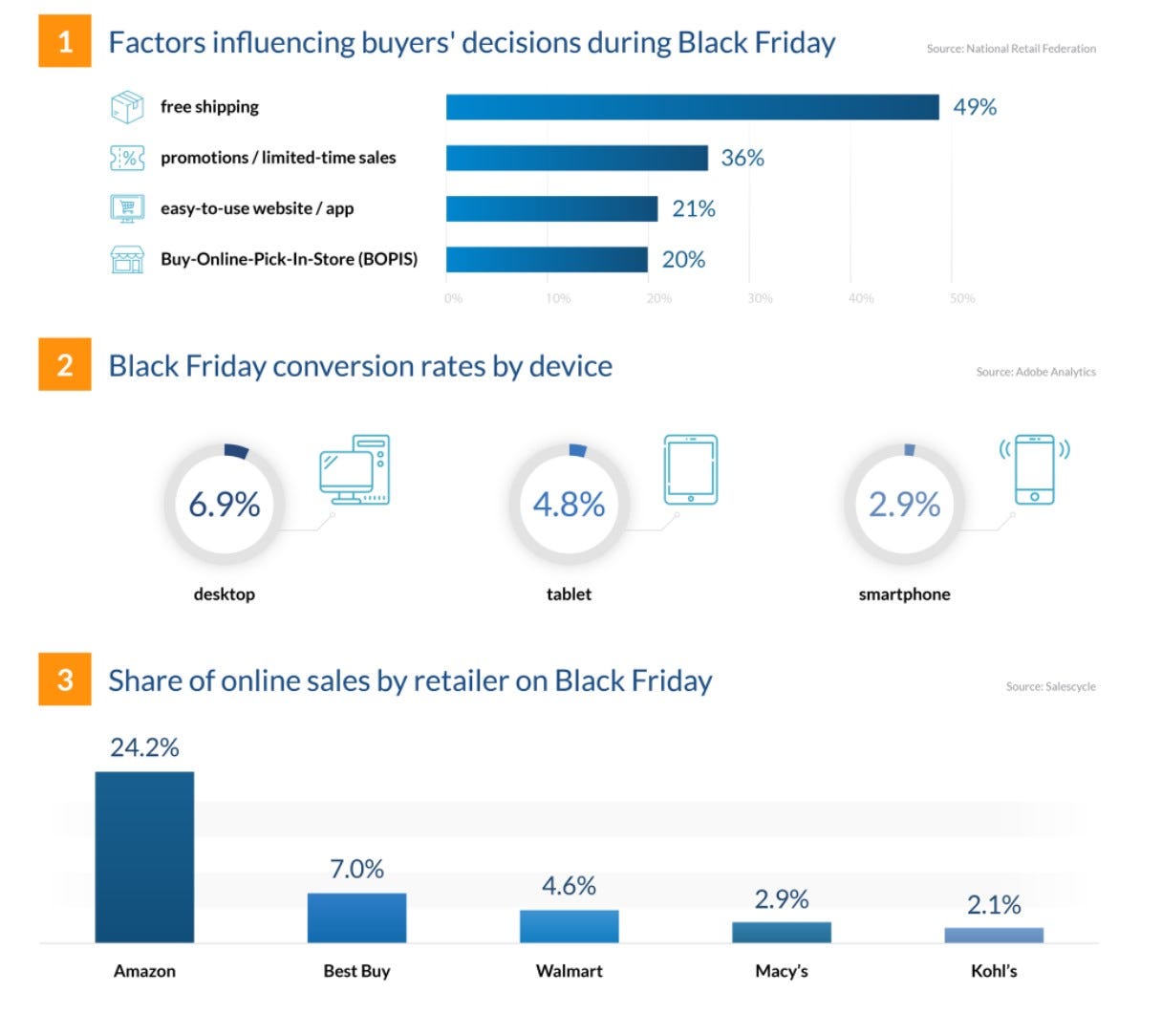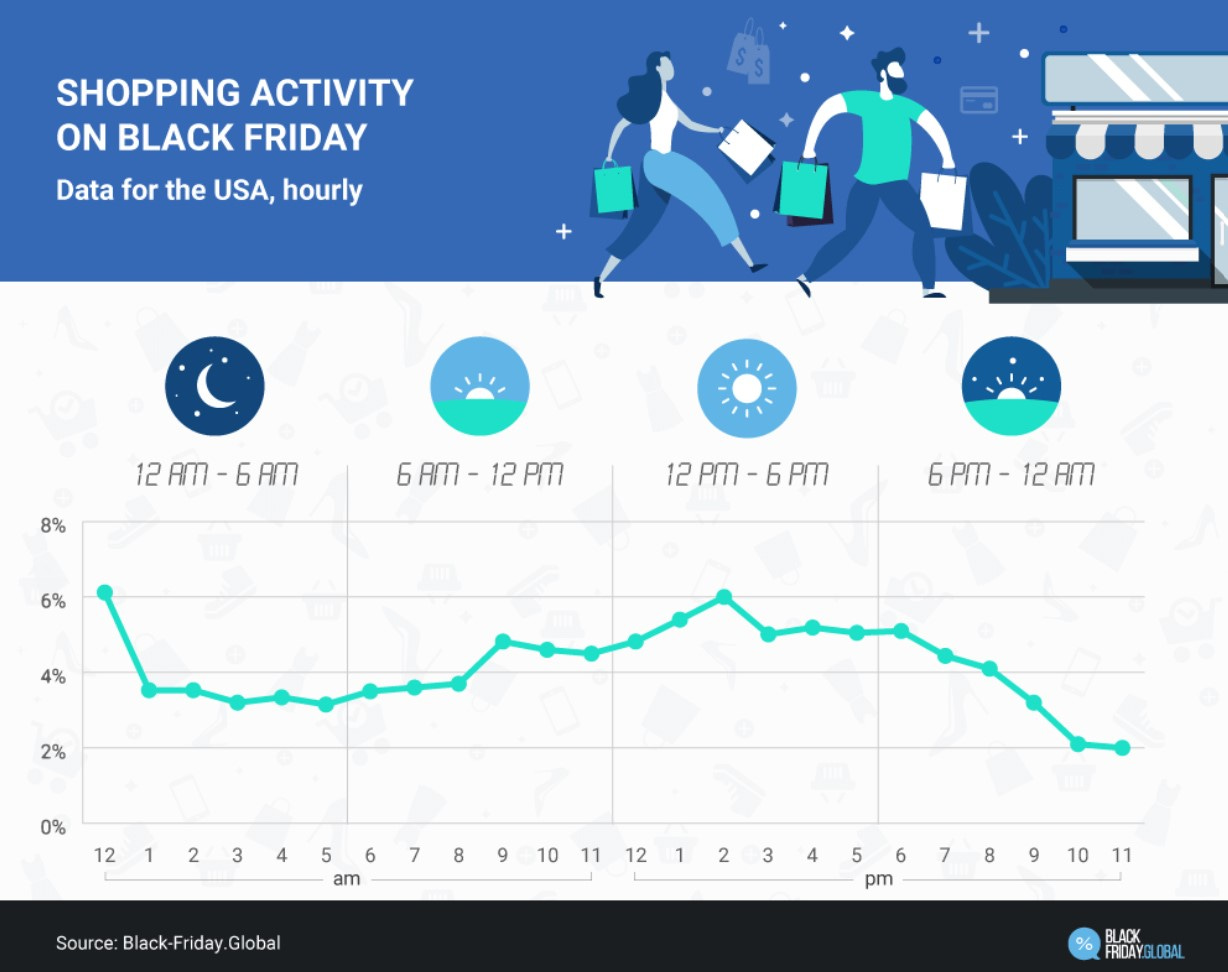Black Friday. Let's Gooooooo!!!
If you love retail, Black Friday is the beginning of the most exciting part of the year. Lots of prep, hard work, frustrations along the way; but when those registers ring, the feeling is simply WOW!
Before we jump into Black Friday, let’s focus on priorities!
Thanksgiving is a day for food, family, football, and resting up for the holiday selling season. But more than anything it’s a day for gratitude. After a very difficult 2020, and a better but still crazy 2021, we may be tempted to forget about gratitude. Let’s all work hard not to let that happen. We should all enjoy the day, appreciate our friends and families, and think about all of the positive things in our lives.
“We must find time to stop and thank the people who make a difference in our lives.” - John F. Kennedy
“Reflect upon your present blessings, of which every man has plenty; not on your past misfortunes, of which all men have some.” – Charles Dickens
"What if, today, we were grateful for everything?" – Charlie Brown
As an aside, I think it’s great that most physical retailers decided not to open their stores on Thanksgiving. I love sales revenue as much as anybody, but Thanksgiving is not the day for that. Keep the stores closed until early Friday morning!
Let’s all remember that plenty of people do need to work on Thanksgiving. In retail, e-commerce continues on. Our first responders, restaurant workers, and many others also do not get the day off. Let’s keep them in our thoughts and appreciate them.
Have an absolutely superb Thanksgiving!
To celebrate the holiday and show a bit of gratitude, I have taken down the paywall for this issue. It will resume next week. Hopefully everyone enjoys the full content below (it’s perfect Thanksgiving reading)!!
What’s Up with This Black Friday Thing?
All of us in retail, as well as most consumers, know that Black Friday is the unofficial start of the holiday shopping season. Merchants typically open early and offer some of the best bargains of the entire year.
But what’s the history of Black Friday? Where did it come from? Is it still as meaningful as it has been historically? Let’s learn a bit more about Black Friday!
The Back Story
Per History.com, in 1869, two less than trustworthy Wall Street financiers bought as much gold as they could. They wanted to artificially drive up the price and then sell off the gold at a huge profit. An early “pump & dump” scheme. The plan backfired when the gold market collapsed. It took the stock market with it, bankrupting millions on Friday, September 24. The first Black Friday. The term Black Friday referred to this financial crisis for a century.

The connotation of Black Friday only got worse during the early 20th century. Apparently nobody wanted to work the day after Thanksgiving (which is still true today, for the most part at least!), and employees called out sick in droves. Businesses struggled as a result, owners complained vociferously, and the economy was negatively impacted. The poor perception of Black Friday was magnified.
Black Friday was first tied to post-Thanksgiving shopping in the late 1950’s, but not in a positive way. Tons of tourists, many less than well-behaved, flooded into Philadelphia for the Army - Navy football game. They spent the Friday after Thanksgiving shopping, eating, drinking, causing traffic jams, and in general disrupting the city. As a result, the local police picked up on the name “Black Friday” and tied it to that crazy day. This was the first time the name was broadly used in relation to shopping, and it has not gone away since.
The day after Thanksgiving had been viewed as the unofficial beginning of the Christmas shopping season for years. Many believe that the arrival of Santa Claus at various Thanksgiving Day parades was the driving force for this. The very first Macy’s parade, held on November 27, 1924 was advertised as a “Christmas Parade” featuring Santa Claus. For many, this day signaled the official start of the holiday shopping season.
Ultimately, the perception that the day after Thanksgiving was the beginning of the holiday season and the Philly term “Black Friday” began to converge. The new use of the term Black Friday spread slowly, first appearing in The New York Times on November 29, 1975, in which it referred specifically to "the busiest shopping and traffic day of the year" in Philadelphia.
Black Friday, as we know it today, was born in the 1980’s. The term still had somewhat of a negative connotation, as noted above, yet it was gaining national attention. Merging one of the most important shopping days of the year with a term perceived by many to be unfavorable was a problem, and many merchants complained.
But, as good merchants do, they found a solution. Per Wikipedia: “Retailers traditionally operated at a financial loss for most of the year (January through November) and made their profit during the holiday season, beginning on the day after Thanksgiving. When this was recorded in the financial records, once-common accounting practices would use red ink to show negative amounts and black ink to show positive amounts. Black Friday, under this theory, is the beginning of the period when retailers would no longer be in the red.”
Cyber Monday & Small Business Saturday
Roughly 20 years ago, it became clear to merchants that consumers were shopping online in large numbers the Monday after Thanksgiving. Retailers saw an opportunity and jumped at the chance to extend the holiday shopping weekend. Cyber Monday was born! By 2017, Americans were spending $6.6 billion online during Cyber Monday, a bit below the $7.9 billion spent on Black Friday itself. Cyber Monday was clearly here to stay!
But wait, there’s more! Friday was covered, as was Monday, but what about Saturday? In 2010, this gap (meaning “opportunity”) led to the creation of Small Business Saturday. The concept of “buy local” was created by American Express. Amex took it a step further and promoted the new shopping day by offering small businesses free online ads in 2011. By 2015, 95 million shoppers spent a total of $16.2 billion at local shops and restaurants on Small Business Saturday.
Facts & Figures
In 2020, Thanksgiving weekend drew 186.4 million U.S. shoppers. That was down 1.7% from 2019, when the same weekend drew 189.6 million U.S. shoppers. Thanksgiving weekend drew 165.8 million shoppers in 2018 and 174.6 million in 2017. (Source: NRF 2019 data and 2020 data)
During the five-day Thanksgiving weekend 2020, shoppers spent an average of $311.75 on holiday purchases. That's down from 2019's average of $361.80, but on par with 2018's average of $313.29. (Source: NRF)
Black Friday 2020 (Thanksgiving plus Black Friday) raked in $14.13 billion in online sales. That's $9.03 billion spent on Black Friday and $5.1 billion spent on Thanksgiving. That's a 19% increase over 2019. (Source: Adobe Analytics)
Black Friday 2019 (Thanksgiving plus Black Friday) raked in $11.9 billion in online sales. That's $7.5 billion spent on Black Friday and $4.4 billion spent on Thanksgiving. That's a 20.2% increase over 2108. (Source: Adobe Analytics)
Black Friday 2018 (Thanksgiving Day plus Black Friday) raked in $9.9 billion in online sales. That's $6.2 billion spent on Black Friday and $3.7 billion spent on Thanksgiving. That's a 19.7% increase over 2017 (Source: Adobe Analytics)
Black Friday 2017 (Thanksgiving Day plus Black Friday) raked in $7.9 billion in online sales. That’s $5.03 billion spent on Black Friday and $2.87 billion spent on Thanksgiving. This spending level is up 17.9% from 2016. (Source: Adobe Analytics)
2020 was a record-breaking year for online shopping: 100 million consumers shopped online (up 8% YoY). Meanwhile, there was a huge drop in in-person Black Friday shopping -- 58.7 million hit the stores on Black Friday (down 37% YoY). On Thanksgiving Day, the drop in in-person shopping was even more pronounced, due to major retailers being closed -- foot traffic dropped 55% YoY (2020 vs. 2019). (Source: NRF 2020 data)
Enthusiasm for online shopping is nothing new. During Black Friday weekend 2019, more shopped online than in stores: During the weekend, 142.2 million shopped online, while 124 million hit the stores. On Black Friday specifically, 84.2 million shopped in stores, while 93.2 million shopped online. (Source: NRF)
2020 was also defined by early shopping, thanks to retailers rolling out Black Friday sales weeks early: 52% off shoppers took advantage of early deals, and, of that group, 38% said they made holiday purchases in the week leading up to Thanksgiving. (Source: NRF)
2020 also sparked enthusiasm for Buy Online Pick Up In Store options. Heading into the 2020 holiday shopping season, 50% of shoppers said they planned to use curbside/contactless pickup more than in the previous year.
In 2019, Buy Online Pick Up In Store saw a 43% increase year-over-year increase during Thanksgiving Weekend (Source: Adobe Analytics).
In 2018, Buy Online Pick Up In Store saw a 50% year-over-year increase during Thanksgiving weekend (Source: Adobe Analytics).
Retailers aren't the only ones expecting business to spike on Black Friday. Plumbers can be 50% busier than normal. On Thanksgiving and the day after, people try to dispose of a shocking amount of leftovers down the kitchen sink.
What Should We Expect This Year?
There are a number of factors that will impact Black Friday and the entire holiday season this year. Inflation, supply chain issues, staffing shortages and the consumer’s desire to get out of the house will all influence what we experience beginning Friday.
According to Bloomberg, this Black Friday season could be rather boring: “With shoppers buoyant (for now),” Andrea Felsted writes, “there’s little need to simulate demand, while supply shortages and higher shipping and labor costs will push retailers to protect margins. That all adds up to fewer doorbusters.” Statistics appear to back her up: “Stacey Widlitz of SW Retail Advisors tracks 60 chains across the U.S. and Europe. At more than 90% of them, she says, promotions are down compared with 2020, when they were already being reined in.”
What is interesting is that many large merchants are reporting improved gross margins despite the increases in product costs and shipping in general. It will be interesting to see if this sustains throughout the season. One thing is clear, there are fewer sale offerings this year than in recent memory across essentially all retailers I have visited. Yet customers are still buying, which is a powerful combination for retailers.
In terms of in-store inventory, many merchants are stating publicly that they will be fine. But according to Felsted, “smaller chains may struggle to secure enough stock. That doesn’t bode well for choice, or a frenzy of special offers.”
My sense it this will be a robust holiday season. Traffic is up, consumers want to spend, shoppers seem a bit less sensitive to sales, selections are reasonable if not ideal, and retailers now offer more convenience than ever (BOPIS, curbside, shipping, delivery, etc.). Although “hope is not a strategy”, my fingers are crossed!
A Few Tips for Black Friday Weekend:
I know this may be repetitive, but these best practices are extremely important in driving a successful weekend:
Team first. Let your team know what to expect, assign clear roles, schedule breaks so they can eat and rest, support them should customer issues arise, praise them, and thank them.
Let associates know you may need to add them to the schedule on short notice and ask for their support.
Open early & close late.
Keep register lines to a minimum. Open additional registers before lines get out of control.
Keep your shelves and displays full. Recover completely every night (add night crews or early morning crews if needed) and fill in products during lulls all day long.
Keep your aisles and walkways wide, clear, and easily accessible. Make it easy for guests to shop.
Protect your assets, especially cash on hand.
Sell, upsell, use add-on selling, suggest alternatives if you don’t have the item being requested, and then sell some more!
As the season progresses:
Watch for closeout opportunities. Late-arriving shipments may result in cancellations and thus low-cost closeouts for sale. A few great deals will supplement your inventory levels and bump your gross margins up.
Keep hiring as a back up. Chances are you will have some associate attrition during the season. It’s easier to over-hire a bit to have team members ready to fill-in rather than trying to hire new people in early or mid-December.
Santa is back in-person in most places. If you are in the vicinity, promoting to those shoppers (coupons, sale flyers, etc.) in line or close by Santa is a great way to reach a somewhat captive audience.
Take a Break with a Word Search:
Copy, paste & print for an easier experience. Let me know if you would like more “Take a Break” content!
Retail News You Can Use:
Mastercard Spending Pulse Expects 10% Sales Growth Thanksgiving Week
6 Strategies to Boost Retention Through the Great Resignation
Ten Steps Retailers Can Take to Shock-proof Their Supply Chains
The Online Retailer with the Lowest Prices is …
Psychological Pricing: What Your Prices Really Say to Customers
How Good is Your Do-to-Say Ratio?
Giving Gen Z Customers What They Want
Interesting Pics:
Sponsored Content
Quotes of the Week:
“Take all your problems and rip ‘em apart. Oh oh oh, carry them off in a shopping cart” – The White Stripes
“Shopping is my cardio” – Carrie Bradshaw, Sex and the City





